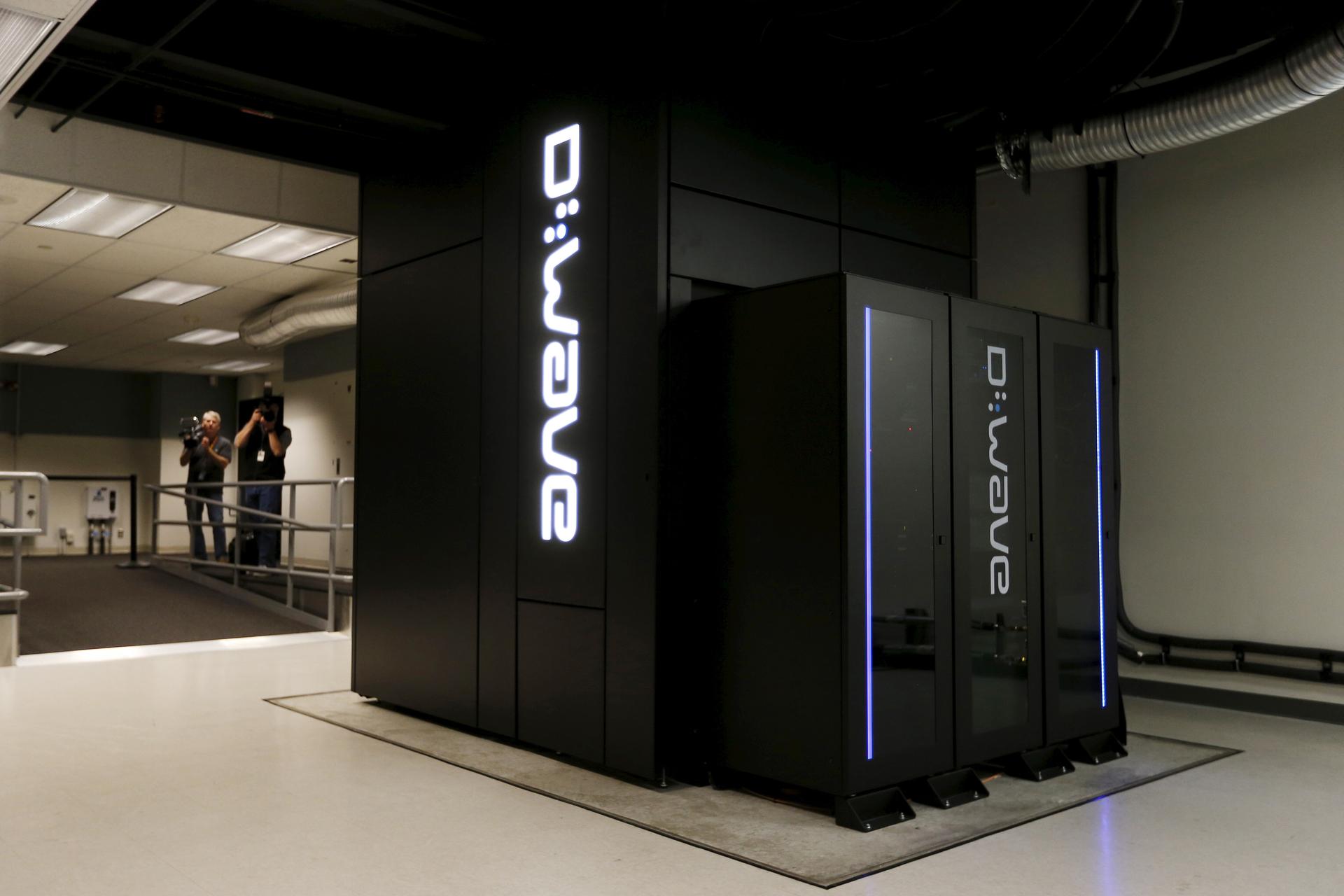Scientists hail latest quantum computer as ‘holy grail’ of computing
A D-Wave 2X quantum computer is pictured during a media tour of the Quantum Artificial Intelligence Laboratory (QuAIL) at NASA Ames Research Center in Mountain View, California, December 8, 2015.
Engineers and computer scientists are continually updating computers, making them faster, more powerful.
But a group of researchers have come up with new type of a quantum computer. It’s a device that harnesses the strange laws of physics to solve problems more complex than any our current computers are capable of tackling.
This quantum computer, according to a paper just published in the journal Science, is composed of just five atoms. And particularly exciting for researchers: they believe it is easily scalable to larger versions.
Researchers made the quantum computer in a lab. They took an atom, removed electrons to make it charged, and then suspended the atoms, forming what’s called an ion trap quantum computer. This ion trap allowed them to run a small quantum algorithm used to factor numbers. The computation was a simple one: they factored the number 15, which of course they found to be five times three.
The actual experimental computation is something anyone who’s had an elementary education can do in their head. But Krysta Svore, a senior researcher at Microsoft Research, says once the quantum computer is scaled up, it will be able to solve unbelievably complicated problems.
“This is really a demonstration of being able to perform a sequence — what we call a quantum circuit, a sequence of logic gates on these atoms that store information in a quantum mechanical way,” says Svore. “So this is, you know, a start toward building up toward a larger algorithm. And this algorithm factoring can actually do things once scaled up. It can do things like break the R.S.A. cryptosystem.”
The applications for future scaled up quantum computers are profound, allowing scientists to solve problems and better understand systems they’ve never been able to fully comprehend.
“What’s perhaps more exciting even than being able to solve something like factoring," Svore says, "is the potential of a quantum computer for other problems outside of cryptography: being able to do things that we simply can't compute today that may be able to solve some of the world's largest problems. You know, thinking about being able to more readily produce artificial fertilizer … with less resources, less cost."
"Being able to extract waste carbon from the environment. These types of problems are very very hard to solve and to study on digital computers, even super computers. But a quantum computer actually promises to be able to solve some of these problems or help solve some of these problems like identifying a catalyst that would allow us to more efficiently capture carbon and help solve global warming. You know, that's something we hope to solve on a scalable quantum computer.”
Our current digital computers work on binary states, in terms of ones and zeroes. Svore compares it to a light switch where, “the light is on or off.” But a quantum computer allows you to be in a continuous state — both on and off at the same time. This superposition gives quantum computers huge advantages in terms of speed and parallelism. In addition, quantum computers can take advantage of other quantum mechanical principles such as interference and entanglement.
Svore says quantum computers will likely not be devices that will sit on our desk or run our phones.
“It’s really more like a super computer,” Svore says. “You can actually connect with a supercomputer over a network and then solve computations on that supercomputer, but the supercomputer’s not sitting in your office. Similarly, a quantum computer will be a resource that you could connect to in the cloud. So potentially it would be sitting in a cloud environment. It's not going to be physically in your office."
Svore hopes the quantum computer will eventually allow scientists to understand the universe in a way they’ve never been able to picture it.
“Using something like a quantum computer, we’ll be able to better simulate physical systems and understand our world. In particular, understanding the ground state of a molecule, understanding dynamics of molecules, understanding these properties of molecules. It's very very hard to understand these on digital computers," Svore says. “When we think about wanting to find a material that actually superconducts at room temperature which would enable lossless power transmission, these questions are much better answered on a quantum computer than on a digital computer. Because, in fact, on a digital computer, solving these problems could take longer than the lifetime of our universe but only a mere … hours or days of computation on the quantum computer.”
This article is based on an interview that aired on PRI's Science Friday. It has been updated to focus on the promise this computer can scale to larger models.
